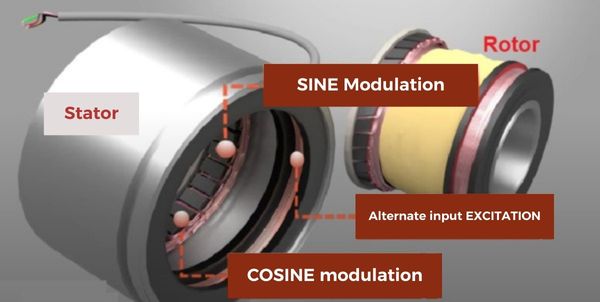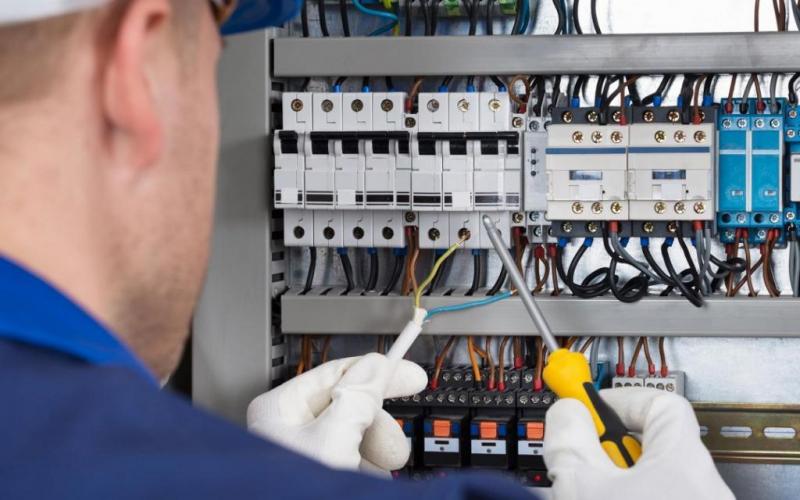Resolver is an electromagnetic transducer, which converts a mechanical movement into an analog electrical signal. It is a very robust feedback device, as it does not have electronic parts. Its design is similar to a small synchronous motor.
Resolver stands out for maintaining reliable performance in applications with environments of high temperatures, radiation, vibrations/shocks and contamination. What we have already seen is a limitation on the Encoder’s application, due to its construction technology. Discover our post about: Encoder.
Operation
Resolver is a rotating transformer that determines the angle and speed of displacement of its rotor, information obtained by a sinusoidal variation. A high frequency sinusoidal electrical supply is required in the stator primary winding, where a reference sinusoid is generated in the rotor winding.
The stator has two secondary windings (Sine/Cosine) displaced 90° from each other, which receive feedback from the rotor winding (reference). As the rotor turns, the secondary signal (Sine/Cosine) changes accordingly, providing a unique relationship. Once the displacement angle and rotor speed are determined, it is necessary to use the RDC (digital resolution converter) or DCP (digital signal processor) to connect the resolver to a controller.

Application
- Servo Motors;
- Articulated Robot;
- Machine Axis;
- Cutting System;
- Machine Axis;
- Length measurement;
- Aviation.
Practical Observations
There are parameters that guarantee the correct functioning of the resolver, always consult the manufacturer’s manual, we highlight the main ones that must be observed.
- Precision;
- Input excitation voltage;
- Input excitation frequency;
- Maximum input current;
- Transformation ratio of output voltage to input voltage;
- Phase change of output voltage from input voltage;
- Zero voltage.
Conclusion
Solving is very important in industrial automation as it provides reliable feedback to maintain the operability of production lines and processes. It stands out in its construction technology, free of electronic parts, with a simple and robust design.

